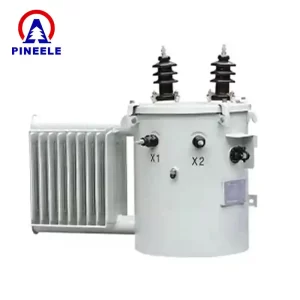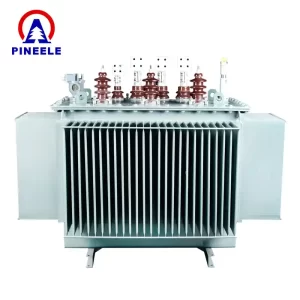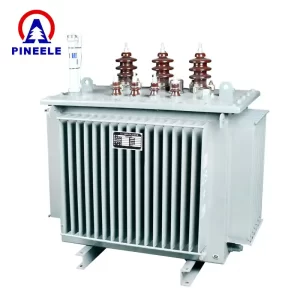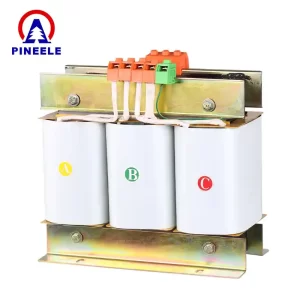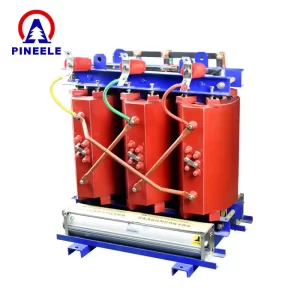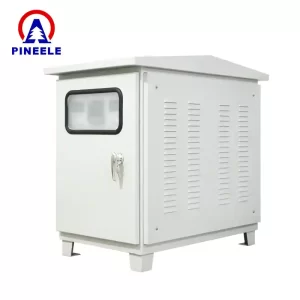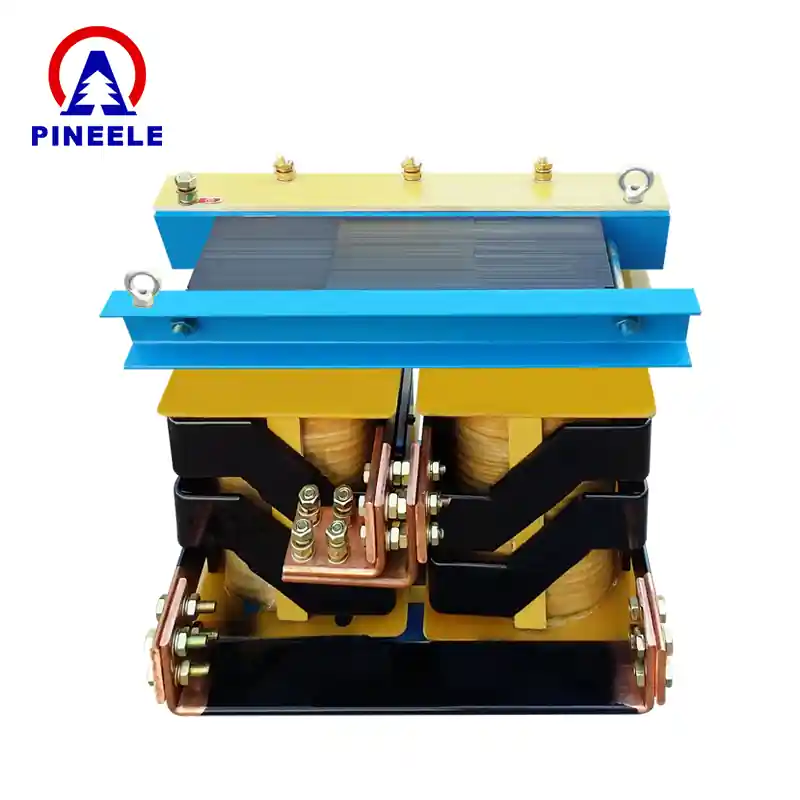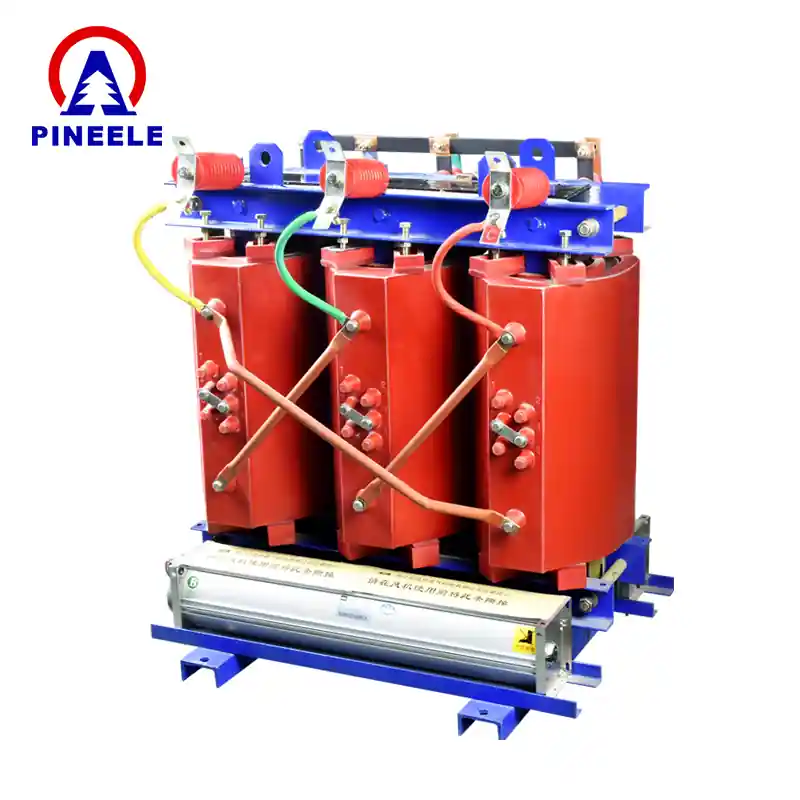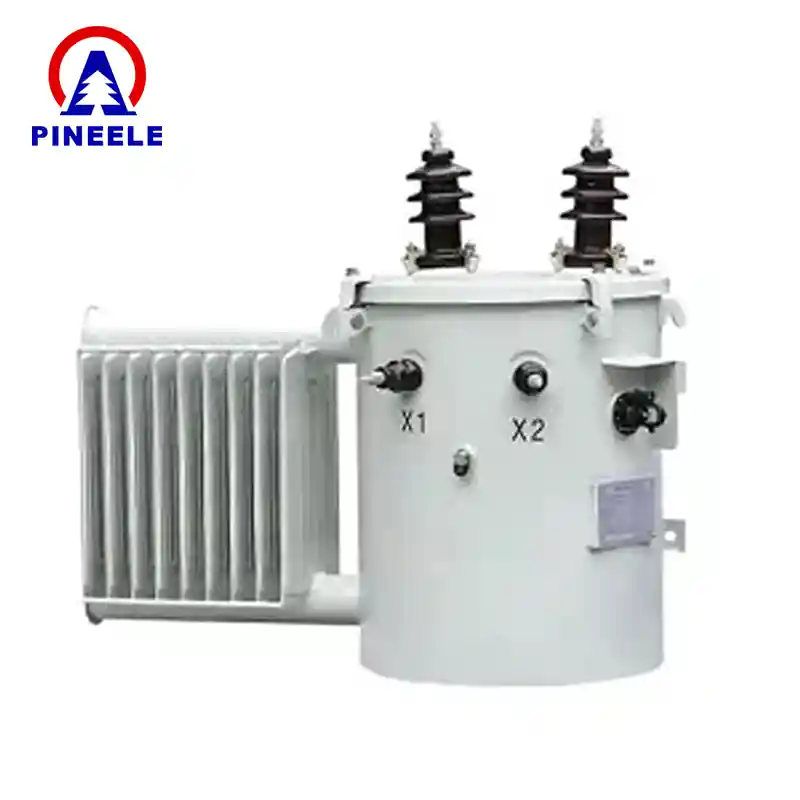
Electrical Transformer – Efficient Power Conversion for Various Applications
An Electrical Transformer is a vital component in power systems, responsible for stepping up or stepping down voltage levels to ensure efficient and safe electricity transmission. These transformers play a crucial role in industrial, commercial, and residential power distribution, reducing energy losses and optimizing voltage levels for different applications.
Electrical transformers come in various types, including power transformers, distribution transformers, isolation transformers, and auto-transformers, each designed to meet specific electrical demands. Power transformers are typically used in high-voltage transmission networks, while distribution transformers regulate voltage for end-users in industries, businesses, and households.
Key Features:
- Voltage Regulation – Ensures stable and efficient electricity flow.
- Energy Efficiency – Minimizes power losses during transmission.
- High Durability – Designed for long-term operation with minimal maintenance.
- Customizable Design – Available in various capacities and configurations to suit different applications.
Electrical transformers are essential in power grids, renewable energy systems, industrial plants, and commercial infrastructures. With advancements in technology, modern transformers now incorporate smart monitoring and automation, improving energy management and reducing operational costs. Whether for large-scale power distribution or specialized industrial use, electrical transformers provide a reliable and cost-effective solution for efficient energy transmission.
Fully Sealed Oil Immersed Power Transformer
Fully Sealed Oil Immersed Power Transformer is a highly efficient and durable transformer designed for stable and safe power distribution. Utilizing advanced core materials and optimized structural design, it significantly reduces no-load losses and operational costs.
Its fully sealed structure prevents oil leakage and eliminates the need for an oil conservator, ensuring long-term reliability and minimal maintenance. The transformer is ideal for power grids, industrial plants, and commercial applications where energy efficiency and operational safety are critical.
Key Features:
- Low energy loss and high efficiency for reduced operational costs.
- Fully sealed design enhances durability and eliminates oil oxidation.
- Compact structure, making it suitable for confined installation spaces.
- Strong overload capacity and excellent cooling performance.
Widely used in distribution networks, this transformer ensures reliable voltage regulation and optimal energy transmission.
Electrical Transformer - Reliable Power Distribution Solution
Electrical transformers play a fundamental role in modern power distribution networks, ensuring stable voltage regulation, energy efficiency, and reliable power supply across different industries. By converting electrical energy between different voltage levels, transformers facilitate safe and effective transmission from power generation stations to end users, minimizing energy losses and protecting electrical systems from overloads.
What is an Electrical Transformer?
An electrical transformer is a static device that transfers electrical energy between circuits using electromagnetic induction. It operates based on Faraday’s law, utilizing magnetic fields and insulated copper windings to step up or step down voltage as required. These transformers are crucial for safe electricity transmission, power factor correction, and electrical isolation in industrial, commercial, and residential applications.
Types of Electrical Transformers
- Power Transformers: Essential for high-voltage power transmission networks, power transformers step up voltage from power stations to reduce energy losses over long-distance transmission, ensuring efficient electricity distribution across vast grids.
- Distribution Transformers: Found in urban and rural power distribution networks, these transformers step down high voltage into usable levels, ensuring safe electricity supply for homes, businesses, and public infrastructure.
- Oil-Immersed Transformers: Using oil as a cooling and insulating medium, these transformers enhance performance and longevity, making them suitable for outdoor substations and heavy industrial applications requiring high power reliability.
- Dry-Type Transformers: Unlike oil-immersed types, dry-type transformers use air or resin insulation, reducing fire hazards and environmental risks, making them ideal for indoor installations in hospitals, commercial buildings, and sensitive industrial environments.
- Step-Up & Step-Down Transformers: Step-up transformers increase voltage for efficient long-distance transmission, while step-down transformers reduce voltage levels for end-user consumption, ensuring compatibility with electrical appliances and industrial equipment.
- Isolation Transformers: Designed to protect sensitive electrical equipment, isolation transformers prevent electrical noise, surges, and fluctuations from affecting connected devices, enhancing stability and safety in data centers and medical facilities.
- Auto Transformers: Featuring a single winding design, auto transformers provide efficient voltage regulation for applications like motor starting, industrial automation, and railway traction systems, reducing power losses and improving system stability.
Key Features of Electrical Transformers
- High Efficiency: Designed with advanced core materials and winding configurations, electrical transformers minimize energy losses, enhancing power system efficiency and reducing operational costs.
- Voltage Regulation: Electrical transformers ensure stable voltage output, preventing fluctuations that could damage sensitive equipment or cause power failures in industrial and residential areas.
- Durability & Longevity: Built with robust enclosures, high-quality insulation, and corrosion-resistant materials, transformers are designed for extended operational life in harsh environmental conditions.
- Compact & Modular Design: Modern electrical transformers come in compact and modular configurations, making them easy to install in confined spaces such as underground substations, industrial plants, and commercial buildings.
- Low Maintenance Requirements: With advancements in insulation technology and cooling systems, transformers now require minimal maintenance, reducing downtime and operational costs for power utilities and industries.
- Environmentally Safe: Eco-friendly dry-type transformers and biodegradable oil-insulated transformers help reduce environmental impact by eliminating hazardous substances and improving sustainability in energy distribution.
Applications of Electrical Transformers
Electrical transformers are widely deployed across various sectors, ensuring safe and efficient power supply to industries, commercial enterprises, and public infrastructure:
- Power Generation Plants: Step-up transformers are used at power stations to increase voltage, allowing electricity to be transmitted efficiently over long distances without excessive energy loss.
- Utility & Grid Distribution: Power utilities use large transformers in substations to regulate voltage levels before distributing electricity across cities, ensuring reliability and stability for millions of consumers.
- Industrial Manufacturing: Heavy industries, including steel mills, chemical plants, and automotive factories, rely on transformers to regulate power supply for machinery, automation systems, and critical operations.
- Commercial & Residential Buildings: Step-down transformers are installed in buildings to lower voltage levels for safe use with lighting, air conditioning, office equipment, and household appliances.
- Renewable Energy Systems: Solar power stations and wind farms integrate transformers to step up voltage before feeding electricity into the national grid, enhancing energy efficiency in clean power generation.
- Data Centers & IT Infrastructure: Isolation transformers in data centers help maintain stable power supply, reducing risks of voltage spikes and ensuring uninterrupted operation of servers and network systems.
Advantages of Using an Electrical Transformer
- Energy Savings & Efficiency: Modern transformers are designed with low-loss cores and optimized windings, reducing energy wastage and improving overall power efficiency.
- Enhanced Safety & Protection: Transformers prevent overloading, short circuits, and electrical hazards by maintaining stable voltage levels, ensuring safety for connected equipment and users.
- Cost-Effectiveness: With their long service life and minimal maintenance needs, electrical transformers provide significant cost savings for businesses and power utilities.
- Customizable Voltage Ratings: Transformers are available in various configurations, making them suitable for diverse applications ranging from small commercial setups to large-scale industrial power systems.
- Smart Grid Integration: Advanced transformers equipped with IoT-enabled monitoring allow remote diagnostics, predictive maintenance, and seamless integration with modern smart grid networks.
Choosing the Right Electrical Transformer
When selecting an electrical transformer, it is essential to consider various factors to ensure optimal performance and efficiency:
- Voltage & Power Capacity: Determine the required voltage levels and power handling capacity based on your application and load requirements.
- Installation Environment: Consider factors like indoor or outdoor installation, temperature tolerance, cooling method (oil or air), and space constraints.
- Efficiency & Energy Losses: Choose transformers with low core losses and high energy efficiency ratings to reduce electricity consumption and operating costs.
- Safety & Compliance: Ensure the transformer meets international standards such as IEC, ANSI, IEEE, and local grid regulations for safe and reliable operation.
- Customization & Features: Depending on your needs, opt for transformers with additional features such as surge protection, noise reduction, and remote monitoring capabilities.
Electrical transformers are the backbone of modern power distribution networks, enabling safe and efficient energy transfer across industries, businesses, and households. Whether used for large-scale power transmission, industrial automation, renewable energy integration, or commercial applications, choosing the right transformer ensures long-term reliability, cost-effectiveness, and improved electrical system performance. As technology advances, the future of electrical transformers lies in smart grid integration, energy-efficient designs, and sustainable solutions for a cleaner, more reliable power infrastructure.
3 Phase Dry Type Transformer
The 3 Phase Dry Type Transformer is a highly efficient and reliable power distribution solution designed for industrial, commercial, and residential applications. Unlike oil-immersed transformers, this dry-type unit uses air or epoxy resin insulation, eliminating the risk of leaks and fire hazards. It is ideal for indoor installations where safety, low maintenance, and environmental sustainability are priorities.
Engineered for high efficiency and durability, the transformer provides stable voltage regulation and excellent thermal performance. It is widely used in power substations, factories, office buildings, and renewable energy systems. With superior insulation properties and robust construction, the 3 Phase Dry Type Transformer ensures long-term reliability while reducing operational costs and energy losses.
This transformer is designed with a compact and lightweight structure, making it easy to install in various environments. Its high mechanical strength and resistance to short-circuit faults make it a preferred choice for power distribution systems requiring enhanced safety and efficiency.
The oil-free design eliminates the need for periodic oil checks and maintenance, significantly reducing the risk of environmental pollution. Additionally, it operates with minimal noise and heat generation, ensuring energy efficiency and stable performance under different load conditions.
As the demand for sustainable energy solutions increases, 3 Phase Dry Type Transformers play a crucial role in modern power grids, providing reliable and eco-friendly power transformation for diverse applications. With smart grid compatibility and automation-ready features, these transformers support the future of intelligent power distribution networks.
